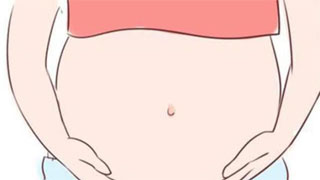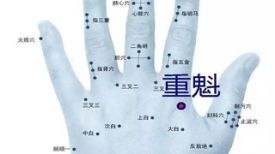
Umbilical stomach is a acupoint discovered and named by Professor Gao Shuzhong for treating stomach pain and stomach diseases. It is located 0.5-1 inches above the left side of the navel (equivalent to 1-2 o'clock on the clock) at the tender point. Because it can also treat stomach diseases in the navel, it is named Umbilical stomach.
[Location of acupoint selection]
At the 0.5-1-inch tender point on the upper left side of the navel (equivalent to 1-2 o'clock on the clock)
【 Clinical Indications 】
Treat all stomach pain and ailments
Excerpt from "One Needle Therapy": In clinical practice, almost all patients with gastric diseases have tender points in the navel stomach or can palpate arterial pulsations. In addition to the above considerations, the theory of gas street can also be combined. The main focus of "Ling Shu · Wei Qi Chapter 52" is on the issue of the six classic specimens and Qi Street. What is Qi Street?
Street "means" street ". In addition to the vertical connections of the twelve meridians, the human body also has four horizontal streets where meridians gather and circulate, namely" streets for chest qi, streets for abdominal qi, streets for head qi, and streets for shin qi ".
Qi Street mainly strengthens the horizontal connection between the front and back of the body, allowing for communication and coordination between the chest, abdomen, waist, and back. The part where Qi Street leads to the outside, that is, the part where it stops, is called the gateway. When it comes to the importance of Qi Street, there is a saying in this article that goes, 'Those who know the Qi Street of the Six Organs can understand the connections and connections at the gateway.'.
'Jie Jie' is the metaphor commonly used in the Inner Canon to untie the knot of a rope or thread. As stated in the first chapter of the "Nine Needles and Twelve Elements" in the "Ling Shu," it is said that if a man has a disease in his five organs, he will still prick, defile, knot, and close it. Although the prick is long, it can still be pulled out, defile for a long time, it can still be melted; although the knot is long, it can still be resolved; even if it is closed for a long time, it can still be decided. It is not said that the disease that cannot be taken away for a long time. If a man is good at using needles, he will still prick, defile, knot, and close it. If he says that it cannot be cured, he has not obtained his skills
So what does' Qishao 'mean? Sui Dynasty's Yang Shangshan believed, "Shao, Ji Ye." He did not explain the meaning of "qi," but Ming Dynasty's Ma Shi said, "If you can understand the qi of the six organs and travel through streets, you must be able to understand what you have resolved, what you have formed, what you have contracted, and what you have introduced as the gateway to Shao." His words were vague and unclear; According to Zhang Jiebin's "Lei Jing" in the Ming Dynasty, "Qi, He Ye; Shao, Ji Ye." Zhang Zhicong followed his words. I think the above statement is inappropriate and difficult to understand. 'Qishao' should have a similar or similar meaning to 'Jiejie'. Qi refers to carving with a knife. In the biography of Zhang Heng in the Book of Later Han, it is written: "Seeking a sword while sailing, guarding a tree while waiting for a rabbit." Shao means entanglement. As the ancient poem "Have Thoughts" goes, "A pair of pearl tortoiseshell hairpins, made of jade." Therefore, "Qishao" means cutting the tangled rope with a knife.
The phrase 'knowing how to untie the knot is a metaphor for tying the door together with a rope.' If you want to enter through the door, you must untie the knot or directly cut it with a knife. This way, the door will naturally open and you can enter and exit freely. That is to say, if you know about Qi Street, treating diseases is as easy as resolving knots and taking care of oneself.
So where are the four gas streets leading to the outside? Where does it end? This article states:
For those with qi in the head, it should stop at the brain; for those with qi in the chest, it should stop at the Ying and Bei Yu; for those with qi in the abdomen, it should stop at the Bei Yu, and for those with qi in the left and right umbilical arteries; for those with qi in the shin, it should stop at the Qi street, and above and below the Chengshan ankle. When using a needle to take this, it must be first pressed and then applied to the hand for a long time, and then stabbed and given
Let's take a look at the Abdominal Qi Street. There are two entrances at the front and back, with the back entrance located at the Back Yu acupoint and the stomach disease at the Stomach Yu acupoint; Where is the gateway ahead? In cases where the pulse is located 0.5 inches away from the midline and the kidney meridian is ascending, the pulse can be located 0.5 inches away from the left and right sides of the navel. Therefore, any abdominal symptoms can be detected by the pulse of the artery with obvious tenderness, and the needle can be inserted at this reaction point.
As stated in "Linggen Miscellaneous Diseases Chapter 26": "Abdominal pain, stabbing the left and right umbilical arteries, already stabbing and pressing them, standing still, without stopping, stabbing the Qi Street, already stabbing and pressing them, standing still
The stomach is located in the abdomen, so it is related to the abdominal qi street. Its tender point is generally fixed, that is, at the navel and stomach acupoints. Acupuncture can directly pierce 1-2 inches and has a certain effect on stomach pain and various stomach diseases. It is often used in conjunction with other acupoints in clinical practice.


